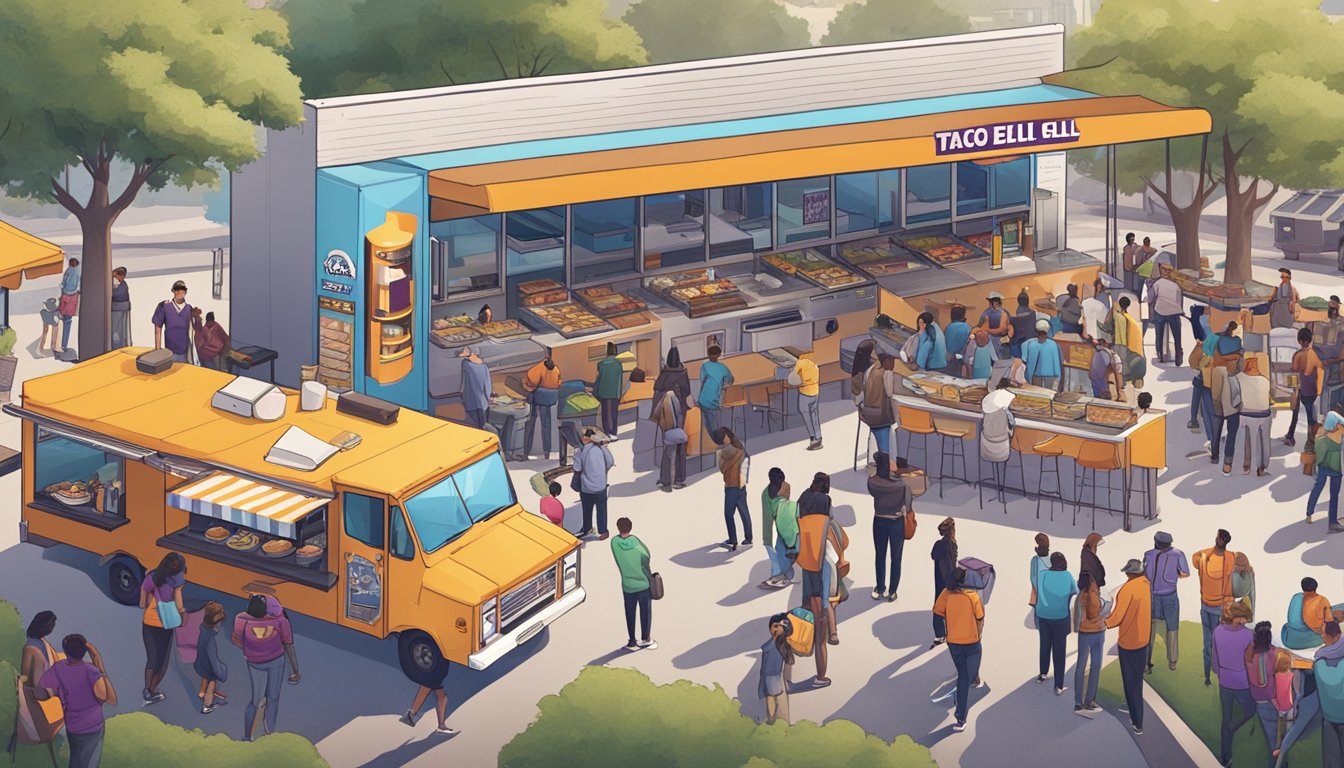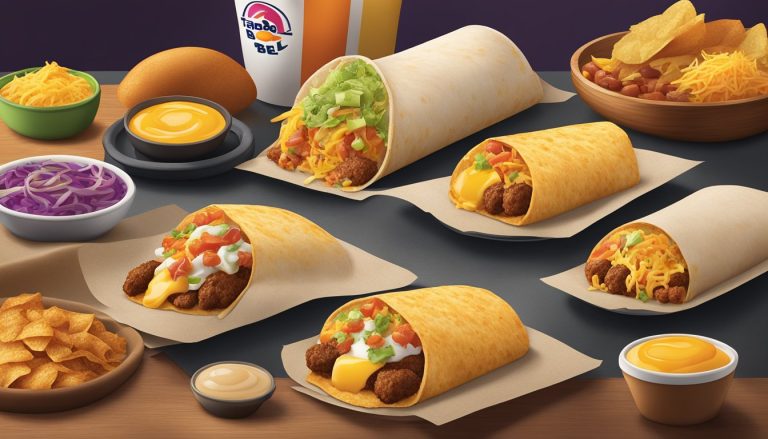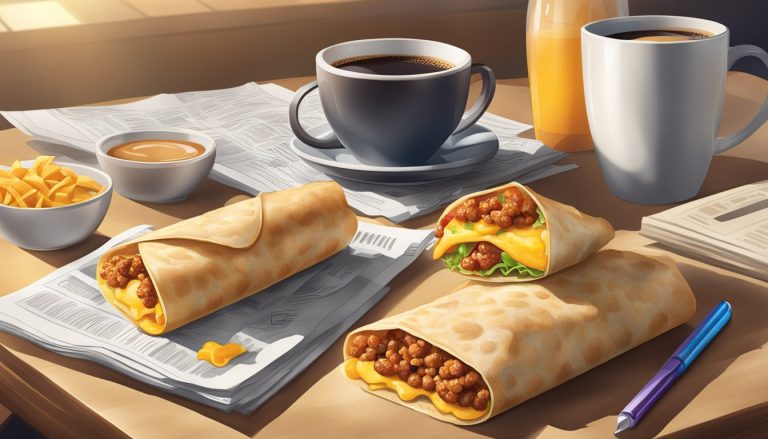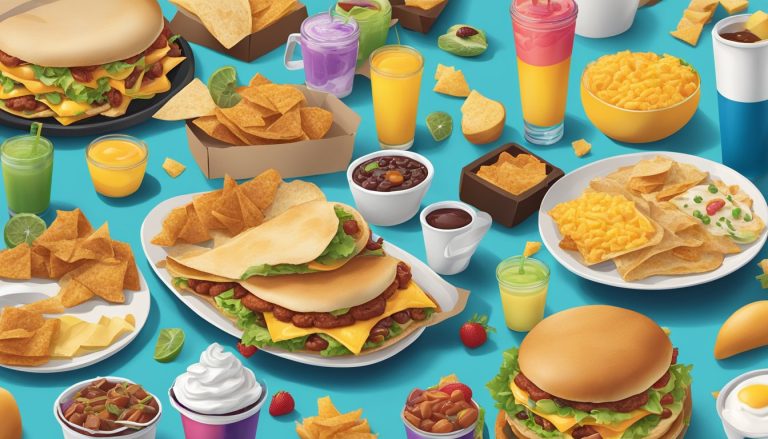Taco Bell’s foray into breakfast in 2014 marked a significant shift in the fast-food landscape. The chain introduced a unique lineup of morning offerings, including the Waffle Taco and A.M. Crunchwrap, catering to on-the-go consumers seeking innovative breakfast options. This bold move not only expanded Taco Bell’s market reach but also influenced the broader food industry, particularly the burgeoning food truck culture.
The success of Taco Bell’s breakfast menu demonstrated the appeal of fusion cuisine and portable, customizable meals. Food trucks, already known for their creative and diverse offerings, took note of this trend. Many began incorporating Mexican-inspired breakfast items and unconventional morning fare into their menus, mirroring Taco Bell’s approach to breakfast innovation.
This cross-pollination of ideas between established fast-food chains and mobile eateries has led to a more diverse and experimental breakfast scene across the United States. Food trucks now often feature breakfast tacos, burritos, and other handheld morning meals, blending traditional breakfast ingredients with global flavors and textures.
The Rise of Taco Bell Breakfast
Taco Bell’s foray into breakfast revolutionized fast-food morning offerings with innovative menu items, bold marketing, and a unique position in the market.
Innovative Breakfast Menu Items
Taco Bell’s breakfast menu launched nationwide on March 27, 2014, featuring creative twists on morning classics. The Breakfast Crunchwrap became an instant hit, combining scrambled eggs, bacon or sausage, cheese, and hash browns in a grilled tortilla.
Waffle Tacos offered a sweet-savory blend with a waffle shell holding eggs, cheese, and meat. Cinnabon Delights provided a dessert-like option with warm, cream-filled pastries.
The Biscuit Taco later replaced the Waffle Taco, offering a flaky biscuit shell filled with eggs, cheese, and meat options. Breakfast burritos and quesadillas rounded out the menu, catering to traditional tastes with a Taco Bell spin.
Marketing Campaigns and Cultural Impact
Taco Bell’s breakfast launch was supported by its largest marketing campaign ever. The company employed humor and boldness to differentiate itself from competitors.
A series of ads featured real-life people named Ronald McDonald endorsing Taco Bell breakfast, playfully jabbing at McDonald’s. This cheeky approach garnered significant media attention and social media buzz.
The breakfast menu tapped into the growing trend of all-day breakfast, appealing to younger consumers seeking non-traditional morning options. Taco Bell’s “Breakfast Defectors” campaign encouraged customers to break away from routine choices.
Social media played a crucial role, with hashtags like #WakeUpLiveMas driving engagement and user-generated content.
Taco Bell’s Position in the Breakfast Market
Taco Bell carved out a unique niche in the competitive breakfast market by focusing on portability and bold flavors. The chain positioned itself as an alternative to traditional fast-food breakfast offerings.
By 2018, breakfast accounted for 6% of Taco Bell’s overall sales, with plans for continued growth. The menu’s success prompted other fast-food chains to innovate their own breakfast options.
Taco Bell’s coffee program expanded to compete with established breakfast players. The chain introduced premium hot and iced coffees to complement its food offerings.
The breakfast menu’s success led to extended morning hours at many locations, increasing accessibility for early risers and shift workers.
Influence on Consumer Behavior

Taco Bell’s breakfast menu altered morning eating habits and reshaped expectations for fast food offerings. This shift impacted both individual consumer choices and broader food industry trends.
Adoption of New Breakfast Rituals
Taco Bell’s breakfast menu disrupted traditional morning routines. Many consumers, especially younger generations like Gen Z, embraced the novel concept of Mexican-inspired breakfast items. The Waffle Taco and A.M. Crunchwrap became popular alternatives to standard breakfast fare.
This shift in morning habits led to increased customer loyalty. Taco Bell cultivated a reputation as a cultural rebel by challenging established norms. The brand’s bold move into breakfast expanded its appeal beyond lunch and dinner.
The value menu approach applied to breakfast items made Taco Bell an attractive option for budget-conscious consumers. This strategy helped overcome initial resistance to changing long-standing breakfast preferences.
Impact on Food Preferences and Expectations
Taco Bell’s breakfast menu influenced broader food preferences. Consumers began to expect more diverse and unconventional options from fast food chains. This trend extended beyond breakfast, affecting menu development across all dayparts.
The success of items like the Breakfast Quesalupa demonstrated a growing consumer appetite for fusion cuisine. Fast food patrons became more open to blending flavors and culinary traditions in their meals.
Taco Bell’s breakfast offerings also raised the bar for convenience and portability. The hand-held nature of many menu items catered to on-the-go lifestyles. This approach influenced other chains to focus on easily consumed breakfast options.
The brand’s breakfast innovation sparked a competitive response across the industry. Other fast food chains expanded and revamped their morning menus to keep pace with changing consumer expectations.
Expansion in the Fast-Food Industry

Taco Bell’s introduction of breakfast revolutionized the quick-service restaurant landscape. This move expanded their market reach and influenced industry trends.
Creating a Unique Market Niche
Taco Bell carved out a distinctive position in the breakfast market with its Mexican-inspired morning offerings. The chain launched a nationwide breakfast menu on March 27, 2014, marking the largest menu expansion in its 50-year history. This bold move targeted the $50 billion limited-service breakfast market, challenging McDonald’s long-standing dominance.
Taco Bell’s breakfast menu featured innovative items that diverged from traditional morning fare. This creativity appealed to customers seeking novel breakfast options. The company supported the launch with its largest marketing campaign ever, signaling a serious commitment to the breakfast segment.
The Growth of Breakfast Sales and Market Share
Taco Bell’s breakfast strategy yielded significant results in sales and market share. The chain experienced a 4% increase in same-store sales, partly driven by growth in the breakfast daypart. This expansion of operating hours boosted overall performance.
Key factors in Taco Bell’s breakfast success included:
- Value-driven offerings like the $5 Cravings Box
- Expanded hours catering to late-night and early-morning customers
- Maintaining strong profit margins (25.6% for company-operated locations)
Taco Bell’s breakfast menu continued to thrive nearly five years after its introduction, solidifying the chain’s position in the competitive quick-service breakfast market. This success demonstrated the potential for fast-food chains to diversify their offerings and capture new revenue streams.
Corporate Strategy and Innovation
Taco Bell’s approach to corporate strategy and innovation focuses on creative partnerships and menu expansions. The company leverages unique collaborations and digital platforms to stay competitive in the fast-food industry.
Collaborations and Partnerships
Taco Bell has forged strategic alliances with unexpected brands to create buzz and attract new customers. The partnership with Cheez-It resulted in innovative menu items that blend familiar snacks with Taco Bell’s signature flavors. These collaborations extend beyond food, as seen in the appointment of Sean Tresvant as CMO, bringing his experience from Nike and Jordan Brand to Taco Bell’s marketing strategies.
The company also taps into cultural moments like the Super Bowl to showcase its innovative spirit. Taco Bell’s marketing team develops campaigns that resonate with their target audience and reinforce the brand’s playful image.
Menu Innovation and Digital Expansion
Taco Bell continually refreshes its menu offerings to keep customers engaged. The introduction of breakfast burritos marked a significant entry into the fast-food breakfast market. This move expanded Taco Bell’s operational hours and opened up a new revenue stream.
Digital innovation plays a crucial role in Taco Bell’s strategy. The company has invested heavily in its app and loyalty program, enhancing the customer experience and driving digital sales. The “Live Más Live” event demonstrates Taco Bell’s commitment to connecting with customers through digital platforms.
Menu innovation extends to limited-time offers and seasonal items, creating urgency and excitement among consumers. These strategies help Taco Bell maintain its position as a creative force in the fast-food industry.
Impact on Food Truck and Quick Service Restaurants

Taco Bell’s breakfast menu and innovative approach have significantly influenced food trucks and quick service restaurants. This impact spans menu adaptations and the use of food trucks as marketing tools.
Adaptation of Menu Items From Taco Bell
Taco Bell’s breakfast items like the Waffle Taco and A.M. Crunchwrap sparked a trend in fusion breakfast offerings. Food trucks began incorporating similar Mexican-inspired morning meals, blending traditional breakfast ingredients with bold flavors. Quick service restaurants followed suit, expanding their breakfast hours and menus to compete.
Many food trucks now feature breakfast burritos and tacos inspired by Taco Bell’s creations. These items often combine eggs, cheese, and meats with unique sauces and toppings. Some trucks even offer their own versions of the Mexican Pizza, adapting it for morning consumption.
Food Trucks as Cultural and Marketing Extensions
Taco Bell’s success with unconventional menu items encouraged food trucks to push culinary boundaries. Trucks became testing grounds for new flavors and combinations, mirroring Taco Bell’s innovative spirit.
Food trucks now serve as mobile brand ambassadors for quick service chains. They allow companies to reach new audiences and test market reception to menu items. Some chains deploy food trucks to promote limited-time offerings or gauge interest in potential permanent additions.
This trend has led to increased collaboration between established restaurants and food truck operators. It has also inspired new marketing strategies, with trucks appearing at events and busy locations to build brand awareness.
Marketing and Brand Identity

Taco Bell’s marketing strategies have played a pivotal role in shaping its brand identity and influencing food truck culture. The company’s innovative campaigns and celebrity partnerships have helped establish a unique position in the fast-food industry.
Celebrity Endorsements and Social Media Campaigns
Taco Bell has leveraged celebrity power to boost its marketing efforts. The brand partnered with Doja Cat for a TikTok campaign that went viral, generating millions of views and increasing engagement. LeBron James also featured in Taco Bell advertisements, appealing to sports fans and younger demographics.
Social media platforms have become key channels for Taco Bell’s marketing. The company’s TikTok presence has grown significantly, with creative content that resonates with Gen Z audiences. These campaigns often highlight new menu items and promote the brand’s playful image.
Crafting the ‘Live Más’ Brand Image
Taco Bell’s ‘Live Más’ slogan encapsulates its brand identity, encouraging customers to embrace a bold, adventurous lifestyle. This philosophy extends to the company’s approach to menu innovation and dining experiences.
The brand image focuses on fun, creativity, and pushing boundaries. Taco Bell’s marketing campaigns often feature bright colors, upbeat music, and scenarios that appeal to young adults. This approach has influenced food truck culture, inspiring mobile vendors to adopt similar branding strategies.
Taco Bell’s marketing efforts have transformed its image from a simple fast-food chain to a lifestyle brand. This shift has helped the company maintain relevance in a competitive market and attract a loyal customer base.




